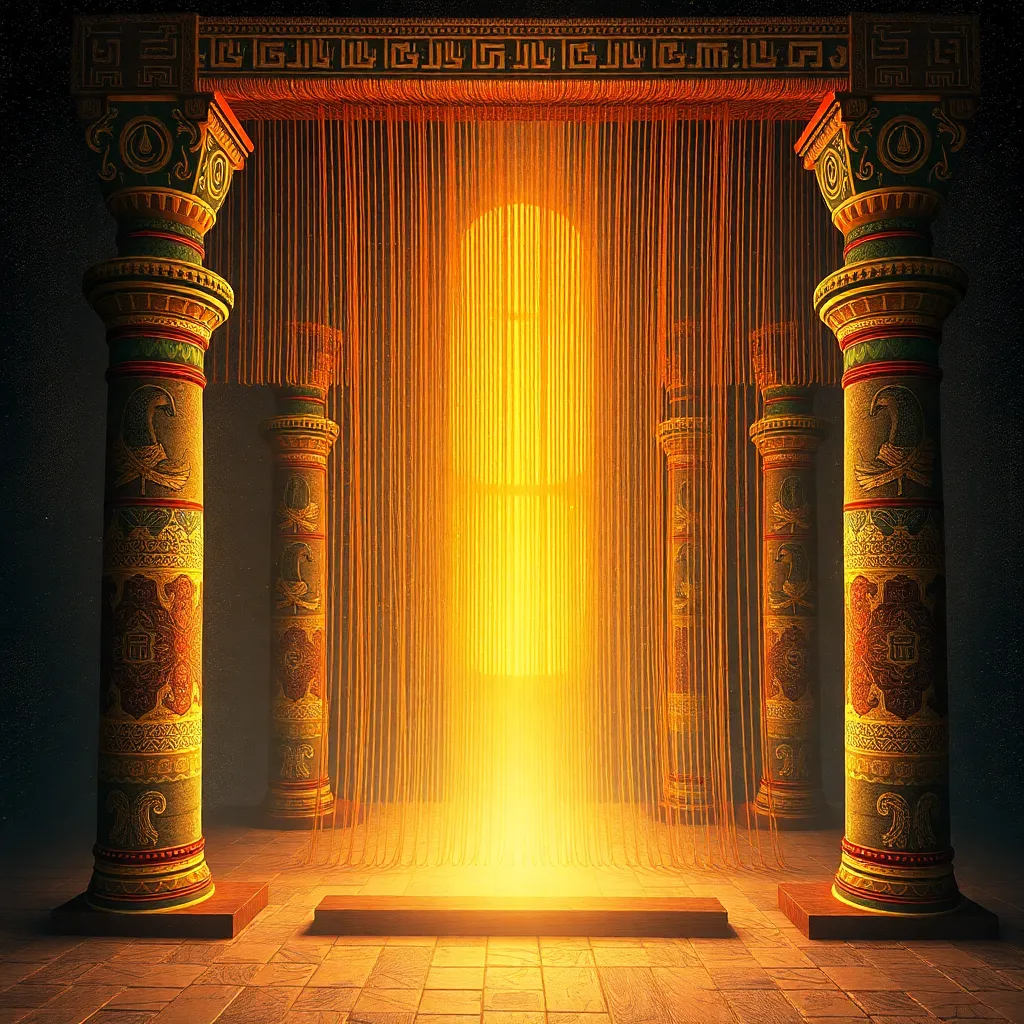The Myth of the Divine Weaving: The Fabric of Existence
I. Introduction
The concept of divine weaving is an intricate metaphor that spans across various cultures and philosophies, representing the interconnectedness of all existence. In this article, we will explore the profound implications of this myth, examining its historical roots, symbolic meanings, and its significance in understanding both individual and collective human experiences.
This exploration serves to highlight how the myth of divine weaving intersects with mythology, philosophy, and the very essence of existence. By delving deep into this theme, we aim to uncover the layers of meaning that have shaped human thought and culture throughout history.
II. Historical Context of the Divine Weaving Myth
The myth of divine weaving has its origins in various cultures around the world, each presenting unique interpretations and significances. From the Greek Fates, who spun the thread of life, to the Norse Norns, who wove the destinies of men and gods, weaving has been a powerful symbol of creation and fate.
Key figures and deities associated with weaving in mythology include:
- Clotho – One of the Greek Fates, responsible for spinning the thread of life.
- Atropos – The Fate who cuts the thread, determining the end of life.
- Frigg – In Norse mythology, the goddess associated with weaving and fate.
- Arachne – A mortal weaver whose tale illustrates the dangers of hubris in Greek mythology.
As these myths evolved over time, they adapted to the cultural contexts of different societies, reflecting their values and beliefs about existence, fate, and creativity.
III. Symbolism of Weaving in Human Experience
Weaving serves as a powerful metaphor for interconnectedness in human experience. Just as threads are woven together to create fabric, so too are human lives intertwined, forming a complex tapestry of relationships and experiences.
The significance of threads and patterns in life narratives is profound. Each thread represents an individual story, while the patterns symbolize the shared experiences that connect us all. This can be seen in:
- Family ties and legacies.
- Community bonds and cultural traditions.
- Personal journeys and collective histories.
Moreover, the role of craftsmanship and creativity in weaving reflects the artistry of life itself. Each person, through their choices and actions, contributes to the larger fabric of existence, shaping both personal and communal identity.
IV. Philosophical Perspectives on Existence
Philosophical theories of existence often grapple with the notions of idealism versus materialism. Idealism posits that reality is fundamentally mental or spiritual, while materialism asserts that reality is composed of physical matter. The divine weaving myth can be interpreted through these lenses, as it embodies the interplay between the spiritual and the material.
The notion of fate and free will plays a crucial role in the context of divine weaving. Are our lives preordained by the divine weaver, or do we possess the agency to manipulate our threads? This question has been a central theme in existential philosophy, challenging individuals to reflect on their own narratives within the broader tapestry of life.
V. The Science of Existence: A Modern Perspective
In contemporary discussions, the relationship between science and mythological narratives has gained traction. Quantum physics, for instance, reveals the interconnectedness of reality at the subatomic level, suggesting that all beings are part of a larger, intricate tapestry.
This leads to intriguing questions about the nature of reality:
- Are we all part of a larger cosmic design?
- How do our individual actions resonate within this collective framework?
As science uncovers the complexities of existence, it encourages a reevaluation of ancient myths, inviting us to consider how they inform our understanding of the universe today.
VI. Cultural Interpretations of the Divine Weaving
Weaving motifs permeate literature and art, serving as enduring symbols of connection and creation. From tapestries depicting heroic tales to literary works that explore the threads of destiny, the divine weaving narrative continues to inspire creativity.
The role of storytelling in preserving the myth cannot be understated. Oral traditions and written texts have carried the tale of divine weaving through generations, adapting it to contemporary contexts while maintaining its core significance.
Modern adaptations and reinterpretations of the divine weaving narrative can be seen in:
- Films that explore themes of destiny and choice.
- Literature that delves into the complexities of human relationships.
- Artworks that depict the interconnectedness of life.
VII. Critiques and Reexaminations of the Myth
Despite its rich history, the relevance of myth in contemporary society is often debated. Some argue that the divine weaving myth may oversimplify the complexities of existence, while others caution against literal interpretations that could overshadow the metaphorical truths of the narrative.
Reimagining the myth in the context of modern existential crises can provide fresh insights. As individuals face challenges in understanding their place in a rapidly changing world, the divine weaving myth encourages reflection on personal narratives and the collective fabric of humanity.
VIII. Conclusion
In summary, the myth of divine weaving serves as a profound exploration of existence, weaving together themes of interconnectedness, fate, free will, and creativity. Its enduring legacy invites us to reflect on our own stories and the shared tapestry of human experience.
As we navigate the complexities of modern life, let us embrace the metaphor of divine weaving, recognizing the intricate threads that connect us all in the fabric of existence.




